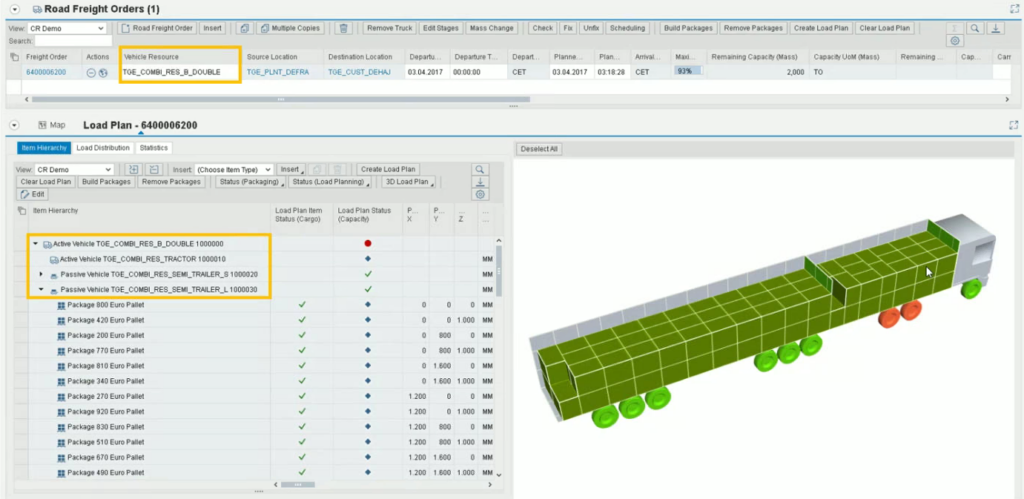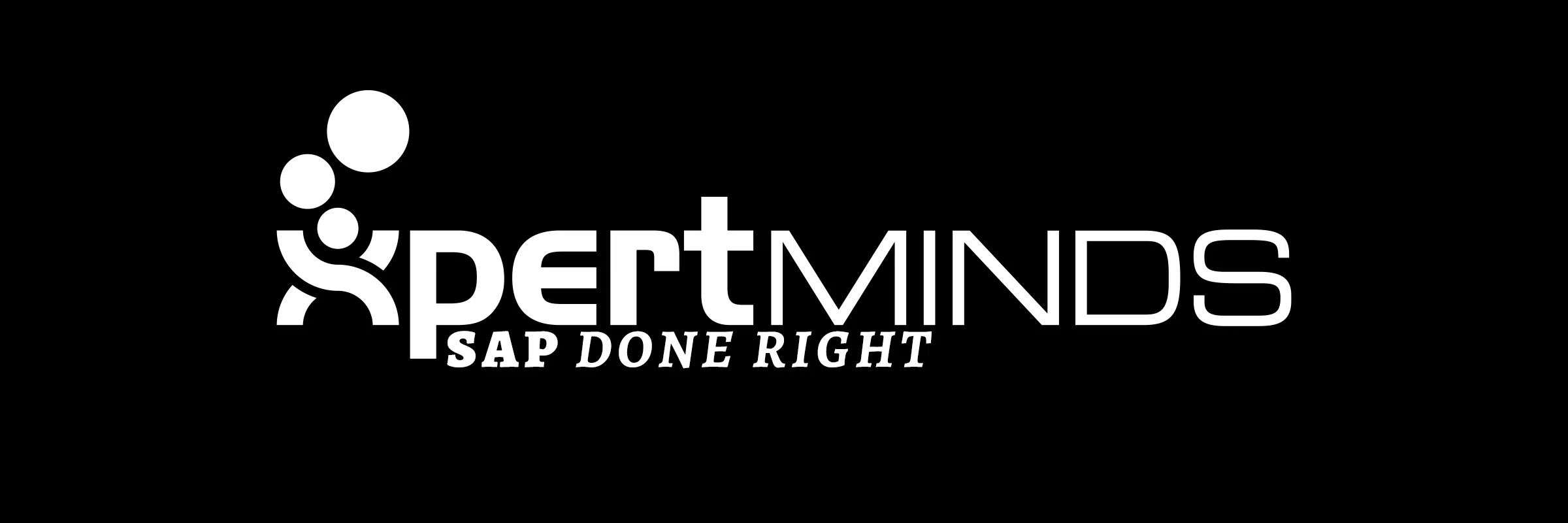With the recent release of SAP S/4HANA 2020 we’ve had a chance to compile a list of key innovations being released in the Transportation Management area, including Combination Resource, Embedded Scheduling and new Consignment Order documents.
Combination Resource

Historically, whenever we needed to model tractors and trailers within SAP TM we ended up with separate vehicle resources for each and also separate capacity documents (Freight Order vs Trailer Unit). There are certainly instances where such added complexity is justified, for example in fleet operations where it is common to swap and drop-and-hook trailers. However, there is a number of use cases where tractors and trailers are coupled in a fairly static fashion, and thus the use of Trailer Units can be overkill. At the same time, there is a need to be able to model trailers separately from tractors for capacity and load planning purposes. In other words, there exists a requirement to perform vehicle scheduling and routing (VSR) optimization at a more generic truck (tractor + trailer) level, while being able to perform load planning at a more granular level where products/packages are assigned to specific locations within a specific trailer.
We now have ability to define a special type of vehicle resource called a Combination Resource which is made up of multiple component vehicle resources. The component resources represent templates for the tractor and trailer portions of the truck in order to map the physical properties of those components such as axle properties, dimensions, etc. They do not represent real physical resources and are thus not used directly by VSR optimization or manual planning in the Transportation Cockpit.
We are then able to perform scheduling and route optimization at the Combination Resource level, resulting in Road Freight Orders being created without the need for Trailer Units in the document flow. At the same time, we are still able to perform Load Planning activities at the individual trailer level.
Embedded Scheduling
In all previous versions of SAP TM the Scheduling function (VSS) was accomplished by calling the optimizer engine via RFC. Not to be confused with Vehicle Scheduling and Routing (VSR) optimization, Scheduling does not determine or change the sequence of stops on a given capacity document (Freight Order, Trailer Unit, etc.). Instead, Scheduling determines the dates/times associated with those stops. For companies that build their capacity documents via VSR optimization, Scheduling usually comes into play when various changes are made to those capacity documents (aka Rescheduling). For companies that build their capacity documents via manual planning, Scheduling is the main mechanism by which planned dates and times are automatically determined in the system.
With S/4HANA 2020 we are now able to utilize an Embedded ABAP-based engine for Scheduling, instead of calling the external C++ optimizer program. The optimizer-based Scheduling is still available, but customers now have a choice between these two options by utilizing the appropriate strategy in planning profile configuration.
It appears that the main driver for doing this is SAP’s desire to simplify administration and eliminate the need for calling the external optimizer program in their Cloud deployment offerings. It will be interesting to see whether ABAP-based Scheduling will completely eliminate the use of optimizer-based Scheduling in the future.
The new Embedded Scheduling engine does have one new feature that is not supported by the traditional optimizer-based engine – cost-based determination of pick-up and delivery dates. However, the S/4HANA 2020 version of this new scheduling engine also has one major limitation – it does not support the use of scheduling constraints which is currently the only standard way of mapping driver hours of service in SAP TM (maximum drive and duty time, before a break is enforced), which is likely going to greatly limit its usability until this limitation is addressed in future S/4HANA releases.
Company Code and Plant Determination during Freight Settlement
Those of you who have already utilized TM in an embedded S/4 scenario have likely come across an unpleasant surprise where a Freight Settlement Document (FSD) type can only be assigned to a single company code and plant through normal SPRO configuration, unless you utilize a BAdI to enhance this behavior via ABAP development. This shortcoming is finally fixed in S/4 HANA 2020 and we are now able to utilize multiple company codes and plants with the same FSD type all through simple configuration adjustments.
Consignment Orders
Historically, the Advance Shipment Notice (ASN) process in SAP involved posting an IDOC against a purchasing document (purchase order, scheduling agreement, etc.) in SAP ERP, resulting in an inbound delivery being created. With S/4HANA 2020 release we now have the option of routing the ASN to Transportation Management instead, using the existing TransportationOrderGenericRequest_In inbound web service. SAP TM functionality can then utilize the ASN information to automatically identify and group corresponding Freight Units into a new type of document called Consignment Order which can in turn be planned to a Freight Order. The creation of the Consignment Order can also trigger the automatic creation of the Inbound Delivery on the SAP ERP side.
Other Notable Features
- Improvements to Normalized Quantity functionality which was introduced in SAP TM 9.6. This is a very useful feature for calculating the utilized capacity on vehicle resources, as many businesses cannot simply rely on weight or volume. For example, we could model floorspace or skid count as a way to measure utilized capacity.
- Use of Side Loading Constraints within incompatibilities provide a way to model loading and unloading direction limitations on vehicle resources and locations. We now have a way to maintain profiles in location and vehicle master data that can drive such incompatibilities. For example, we can model a scenario where dry van trailers that can only be unloaded from the back are not allowed at a customer location that only allows unloading from the side of the trailer.

